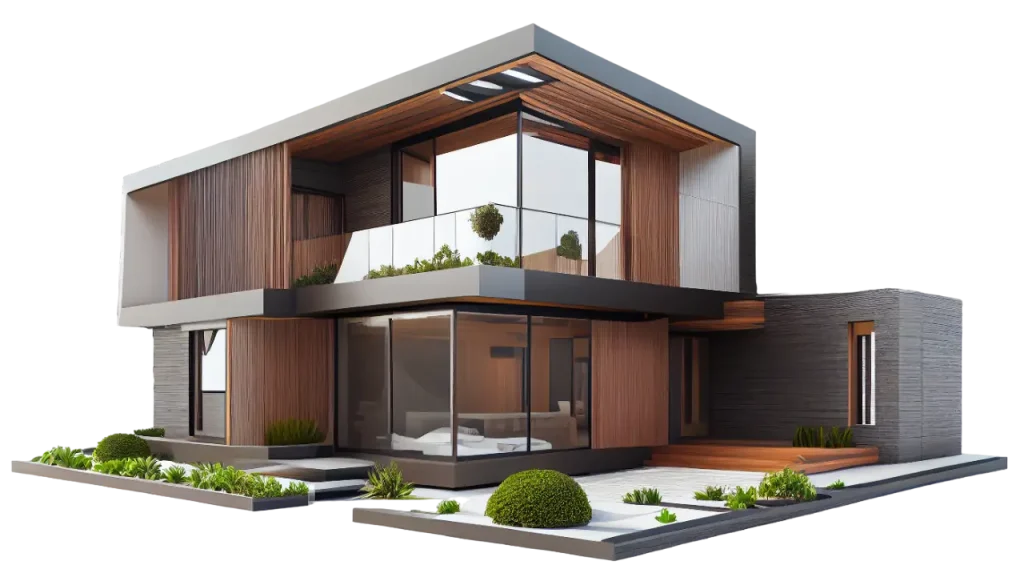Constructing a villa, much like any other building, involves a series of sequential steps that must be adhered to. The villa construction process is extensive and time-consuming, necessitating a significant investment of time, energy, and funds. A fundamental plan is essential to initiate the villa construction project. By having a well-thought-out villa construction plan in place, you can expedite the construction process, minimize the need for rework, and prevent unnecessary expenditures.

Stages of Villa Construction
- Villa Land Survey and Topography: The initial step in constructing a villa involves surveying and mapping the land. Engineers design each villa plan based on the land’s dimensions and the client’s preferences and requirements. Additionally, they estimate the approximate cost of building the villa.
- Land Preparation: Before commencing villa construction on the chosen plot, thorough land preparation is essential. This process includes removing any extraneous elements, such as decaying plant roots. The land must have a completely level surface, free from any obstructions, to begin the construction process.
- Earth Excavation: Excavating the land is a crucial stage in villa construction, as it lays the groundwork for the villa’s foundation. This process is equally vital for constructing any other type of structure. The strength, durability, and overall resilience of the building hinge on proper excavation. Once the excavation is complete, the foundation is established using specialized tools and equipment.
- Constructing and Forming the Villa Foundation: During this phase, the villa’s foundation is meticulously crafted. The process involves concrete pouring and framing, which significantly influence the villa’s overall safety and longevity. Specialized materials, including concrete and reinforcement, are employed. It is imperative that these critical tasks be carried out under the close supervision of experienced engineers.
- Enclosure of the Villa’s Premises:
This is the subsequent step in the construction process. The method of walling varies based on the villa’s architectural style and dictates the layout, room arrangement, door placements, and other design elements. Materials such as brick, cement, and wood are commonly employed for this purpose. The walling phase represents the final stage of the initial villa construction process. - Implementation of Beams and the Roof:
In a concrete villa, it is a critical phase. Beams serve as load-bearing elements, transferring the roof’s weight to the villa’s columns. During the concreting process, meticulous inspection of the roof reinforcement joints is essential. If they align with the architectural plan, the concrete pouring for the roof can commence.
- Implementation of Facilities:
During this phase of villa construction, the focus shifts to the implementation of essential facilities. These include water and gas piping, cooling and heating systems, and other utilities. This step occurs after completing the structural stiffening and precedes the commencement of joinery work. All ducts and cables are meticulously positioned according to the architectural plan.
- Floor and Wall Insulation:
As part of the villa construction process, the insulation of both floors and walls is a crucial stage. During this phase, materials such as Styrofoam or other insulation materials are applied. These insulating materials are used on bathroom floors, kitchen areas, and walls to enhance energy efficiency and maintain a comfortable indoor environment.
- Plastering and Whitewashing:
Following the insulation stage, attention turns to plastering and whitewashing the walls. This step involves applying a smooth layer of plaster to the walls, creating a uniform surface. Additionally, various finishing materials—such as ceramic tiles, laminate, parquet, or stone—can be used to cover the villa’s floors, completing the overall flooring process. These choices contribute to both aesthetics and functionality in the villa’s interior spaces.
- Villa Facade Implementation:
Upon completing the villa’s interior, attention should shift to the exterior. The interior decor should harmonize with the villa’s overall appearance. Depending on the villa’s style and design, materials such as stone, wood, and composite can be employed to create an aesthetically pleasing exterior.
- Advantages of Villa Construction:
Building a villa allows for tailoring every aspect to personal taste and requirements. Begin by purchasing land in the desired location, followed by budget allocation for villa construction. A private villa provides a cozy, secluded space for vacations
The cost of building a villa
The cost associated with constructing a villa is influenced by several key factors. These include the villa’s size, the quality of construction, available amenities, the number of floors, architectural design, project location, area, building permits, taxes, expenses related to mapping and the Construction Engineering Organization, as well as utility costs for water and electricity infrastructure. For precise information on the cost of building a villa, we recommend reaching out to the specialized team at Sabke Taze.
